Content
- Definition of disease
- Causes
- Classification
- Symptoms
- Complications
- Diagnostics
- Flushing of the gallbladder and biliary tract
- Conservative therapy
- Diet
- Surgery
- Cholangitis video
Inflammation of the bile ducts in most cases, it provokes an infection that enters the human body through the organs of the digestive system, lymph nodes or blood vessels. The disease proceeds without symptoms or with a pronounced clinical picture. The first violations and signs are a direct reason to contact a hepatologist or gastroenterologist directly. Lack of therapy will lead to serious consequences.
Definition of disease
Inflammation of the bile ducts in medicine has its own name - cholangitis. The pathological condition is characterized by severe inflammation, which occurs against the background of the accumulation of bile in the liver ducts. The disease is provoked by pathogens that enter the organ from the duodenum. Without timely and correctly selected therapy, pathological processes progress, which leads to damage to liver cells.
Causes
Doctors cannot fully establish the provoking causes against which cholangitis develops. In most cases, the disease is diagnosed in people with a hereditary predisposition.
Despite this, there are pathologies that often lead to inflammation of the bile ducts:
- diabetes;
- acute pancreatitis;
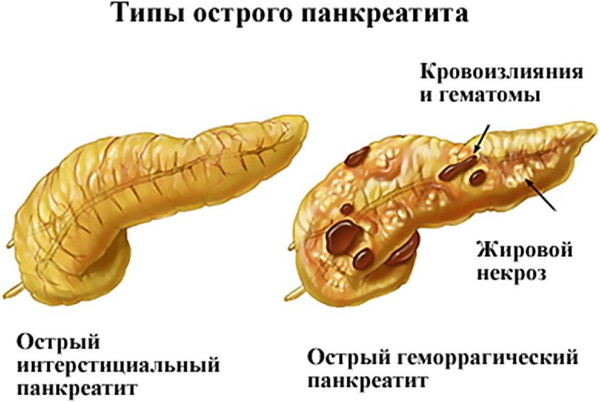
- ulcerative colitis;
- inflammatory lesion of the gastrointestinal tract;
- Crohn's disease;
- the formation of stones in the bladder;
- cholecystitis;
- dysbiosis.
Cholangitis is often diagnosed in women aged 50-60 years, while concomitant inflammatory diseases of the digestive system are also detected.
There are secondary provoking factors against which pathological mechanisms are triggered:
- immunological reactions of the body;
- infestation with parasites;
- psychological disorders, depression, emotional stress;
- congenital abnormalities in the work of the liver, gallbladder;
- abnormal development of the bile ducts;
- endocrine pathologies;
- hereditary predisposition;
- dysfunction of the pancreas;
- dyskinesia of the bile ducts;
- violation of the composition of bile.
The provoking factors are also unhealthy diet, extra pounds, hormonal disorders, bad habits (alcohol abuse, tobacco products). A hepatologist or gastroenterologist will help to establish the cause and diagnosis. It is important to go to the hospital right away at the first signs in order to determine the inflammation and its sources.
Classification
In medicine, certain types of cholangitis are distinguished, taking into account the course of the inflammatory process, the cause of the disease and other circumstances.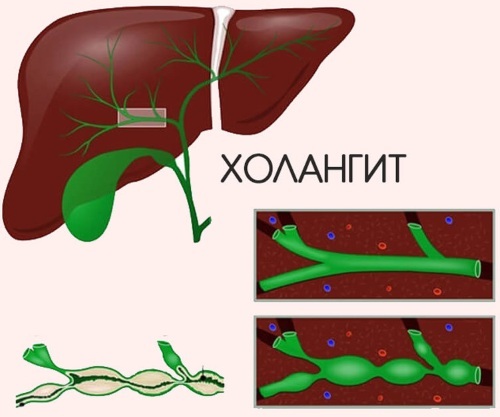
| Name | Description |
| Spicy |
|
| Chronic cholangitis |
|
Cholangitis develops in stages, at each stage there are certain degenerative changes in the tissues of the gallbladder and liver. In some situations, the inflammatory process affects neighboring internal organs.
Stages of inflammation of the bile ducts:
| Name | Description |
| Stage I | The disease manifests itself with severe clinical symptoms (weakness, high fever, chills, pain, surges in blood pressure). |
| Stage II | Inflammation provokes an increase in the liver and spleen, jaundice manifests itself. |
| Stage III | Progressive inflammation leads to the fact that the functioning of other internal organs is disrupted. Concomitant pathologies develop. Clinical symptoms are aggravated. |
| Stage IV | The last stage of cholangitis, when renal-hepatic failure develops. It is highly likely that the person will fall into a coma. |
The first symptoms of the inflammatory process in the gallbladder cannot be ignored. Human health depends on the speed of providing medical care.
Symptoms
Inflammation of the bile ducts (symptoms of the disease will help pre-diagnose a hepatologist or gastroenterologist) in some situations proceeds latently, and it is possible to identify pathological processes only during a preventive examination or when diagnosing in another way disease. The clinical picture with cholangitis will allow the specialized doctor to determine the degree and stage of development of the inflammatory process.
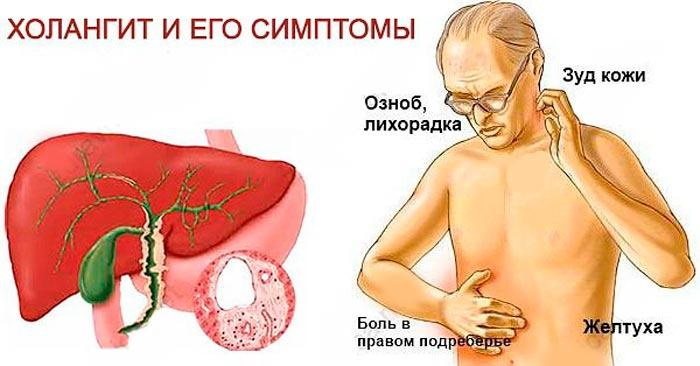
Symptoms depend on the course of pathological processes:
| Name | Clinical signs |
| Acute cholangitis |
|
| Chronic |
|
Acute cholangitis is characterized by a pronounced intoxication syndrome. Intense painful sensations spread throughout the back. The severe course of the disease leads to the fact that a person loses consciousness. In chronic inflammation of the bile ducts, jaundice joins after a while, it indicates serious morphological changes in the liver.
Complications
Inflammation of the bile ducts (symptoms of the disease require a comprehensive diagnosis) in most cases are treated successfully, but there is always a risk of serious complications or consequences. This includes secondary damage to the gallbladder and liver, as well as the pancreas.
Complications of cholangitis:
| Name | Description |
| Peritonitis | A complication that is life-threatening. It is characterized by an acute aseptic or bacterial inflammatory process that develops in the abdominal region. A dangerous condition that requires urgent surgical intervention.
|
| Liver abscess | A pathological condition in which purulent inflammation develops in the tissues of the organ, and inflammatory cavities are formed. |
| Primary cirrhosis | A slowly progressive disease of a destructive-inflammatory nature, in particular of an autoimmune origin. Pathology affects the intrahepatic ducts. |
| Cholangiocarcinoma | A malignant tumor that occurs as a result of the degeneration of the affected tissues of the bile ducts. |
In the absence of timely therapy, progressive inflammation provokes the development of sepsis, followed by infectious toxic shock.
Diagnostics
A comprehensive examination for cholangitis allows you to determine the degree of damage to the bile ducts, bladder and liver. Assess the functioning of organs, identify degenerative changes in tissues and associated pathologies. In most cases, primary cholangitis occurs without pronounced symptoms, therefore, pathological processes are detected during a preventive examination.
Progressive changes in the liver and the symptoms present require the following diagnostic measures:
| Name | Description |
| General blood analysis | Experts assess the enzyme level in the blood, the amount of bilirubin. |
| Retrograde cholangiopancreatography | The most informative examination, which quickly allows you to establish an accurate diagnosis. In the course of diagnostics, special equipment is used - a probe. |
| X-ray | During retrograde cholangiopancreatography, a contrast agent is injected, which on x-ray shows all pathological foci in the organs of the digestive system, liver and gallbladder. |
| Magnetic resonance imaging (MRI) | The study is carried out if the administration of contrast is contraindicated in the patient. An informative examination method that allows you to get the most useful information and confirm the preliminary diagnosis. |
| Biopsy | A diagnostic method is prescribed to patients if the attending physician suspects the development of liver cirrhosis. |
| Ultrasound examination (ultrasound) | The study allows you to determine the pathological foci, their size and tissue changes. |
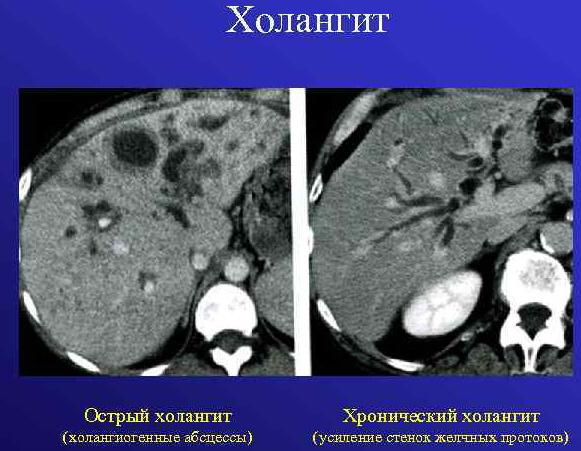
The diagnosis and treatment is carried out by a hepatologist or gastroenterologist. A specialist will help differentiate inflammation of the bile ducts, since pathological changes are accompanied by symptoms similar to other diseases. In patients with cholangitis, concomitant pathologies are always detected, therefore, additional consultation with other specialized doctors may be required.
Flushing of the gallbladder and biliary tract
The inflammatory process in the gallbladder is a consequence of the stagnation of bile. The pathological condition requires emergency medical care to prevent possible complications. In some situations, it is enough for patients to flush the gallbladder and ducts to eliminate inflammation. Cleansing lowers blood cholesterol levels, restores the functioning of the gallbladder.
Contraindications for the washing procedure:
- violation of the digestive process;
- infection with parasites;
- digestive tract disease;
- colds, SARS, flu;
- mental disorders;
- liver failure;
- oncological diseases;
- cardiovascular pathology;
- upper respiratory tract infection;
- severe cholelithiasis and the presence of large stones;
- inflammatory process in the pancreas;
- children under 18 years of age;
- hypertonic disease.
Previous surgery is also a contraindication for cleaning the gallbladder and its ducts. The same applies to the period of gestation, breastfeeding, stroke and myocardial infarction. The cleansing procedure is carried out at home using folk remedies or in a hospital. It all depends on the patient's condition and the stage of development of the inflammatory process.
Conservative therapy
Inflammation of the bile ducts (the symptoms of pathological processes intensify as the disease progresses) is treated strictly in the inpatient department. The patient is admitted to the surgical department, since emergency surgery may always be needed. The method of therapy is selected in each case individually, taking into account the present symptoms of inflammation, the patient's complaints and the results obtained after the examination.
Treatment begins with a strict diet. A specially selected menu will slow down the development of pathogenic flora that triggered the development of cholangitis. Medical therapy is selected by a physician hepatologist or gastroenterologist. It is important for patients to strictly observe all dosages in order to stop the progression of pathology.
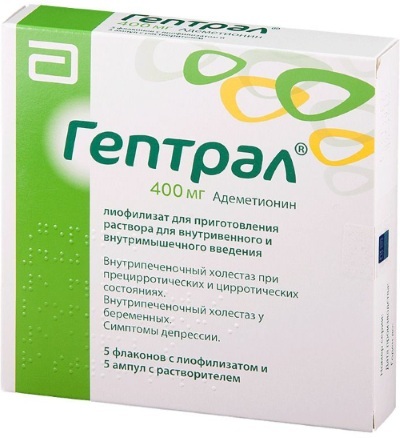
| Drug group | Name | Application |
| Broad spectrum antibacterial agents | Metronidazole, Tetracycline | The medicine is taken orally. In emergency situations, the drug is administered intravenously or by drip at 5 ml per minute. The adult dosage is 1.5-2 g per day. The course of treatment depends on the patient's condition and is 5-7 days. |
| Antispasmodics | Drotaverin, Meverin | Medicines relieve cramping and soreness. Patients are prescribed pills or injections. The adult dosage is 40-80 mg 1-3 times a day. |
| Anthelmintic drugs | Albendazole, Levamisole | Medicines are prescribed to patients if the inflammatory processes are provoked by parasites. Adult patients are prescribed 400 mg 1 time per day. The course of treatment lasts 3 days. If necessary, therapy is repeated after 3 weeks. |
| Hepatoprotectors | Ademetionine, Heptrazan | The drug protects liver cells during bile congestion. The daily dosage for adults is 400 mg. The course of treatment is selected for each patient individually, depending on the condition. |
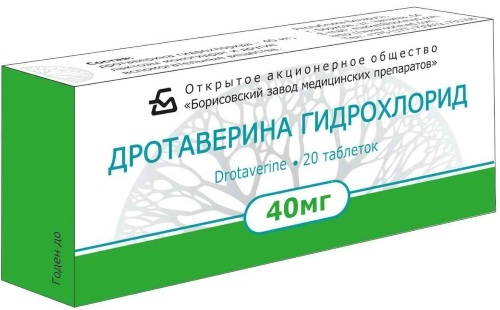 Symptoms of severe intoxication syndrome with inflammation of the bile ducts will help eliminate glucose-saline solution. In some situations, plasmapheresis is performed.
Symptoms of severe intoxication syndrome with inflammation of the bile ducts will help eliminate glucose-saline solution. In some situations, plasmapheresis is performed.
Diet
A strict diet for inflammation of the bile ducts is prescribed to patients during the treatment of cholangitis and in the period after surgery. A special menu is selected by a nutritionist, taking into account the person's condition and the established diagnosis.
| Featured Products | Prohibited foods |
|
|
The diet includes warm and boiled meals, preferably cooked without salt. You should eat in small portions 5-6 times a day.
Surgery
Inflammation of the bile ducts (the symptoms of the disease depend on the degree of organ damage) requires surgical intervention in an emergency or when serious complications appear.
Direct indications for surgical treatment:
- recurrent bacterial cholangitis;
- cirrhosis of the liver;
- persistent jaundice.
The main goal of cholangitis therapy is to restore bile flow and eliminate inflammation. A progressive disease does not always help to stop drugs, so the patient is prescribed surgical treatment. The method of the operation is selected by the surgeon, taking into account the patient's condition and the established diagnosis.
| Name | Description |
| Endoscopic papillosphincterotomy |
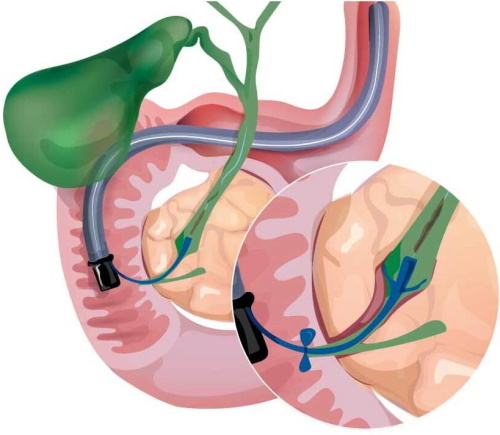 A surgical operation that is carried out by the endoscopic method. During medical procedures, the surgeon dissects the duodenal papilla of the duodenum, thereby restoring the movement of bile. A surgical operation that is carried out by the endoscopic method. During medical procedures, the surgeon dissects the duodenal papilla of the duodenum, thereby restoring the movement of bile. |
| Extraction of bile duct calculi | Removal of stones is carried out under the supervision of an endoscope or X-ray. During the operation, a special tool is used (Dormia basket). With them, the specialist captures calculi and removes them. |
| Endoscopic stenting | Minimally invasive surgical intervention, during which the patency of the bile ducts is restored and their secondary blockage is prevented. |
| Percutaneous transhepatic drainage | Drainage of the bile ducts is carried out through the anterior wall of the abdominal cavity. The surgeon controls the whole process with a fluoroscope or ultrasound device. |
| External drainage of the bile ducts | The doctor also conducts all manipulations under the supervision of fluoroscopy or ultrasound. Through a small incision in the abdomen, a drainage tube is inserted into the gallbladder and sutured to the skin. |
Sclerosing cholangitis is treated with a liver transplant. The rehabilitation period after surgery lasts on average 2-4 weeks. The body recovers within six months. During this period, it is important for the patient to strictly adhere to all the prescriptions and recommendations of the doctor. In particular, eat right, avoid strenuous physical activity, remember about the daily regimen and visit a hepatologist or gastroenterologist in a timely manner.
Inflammation of the bile ducts cannot be left without medical care, especially if the pathological processes are accompanied by severe clinical symptoms. The prognosis for the future depends on the speed of medical care provided and the correct therapy. A patient without treatment runs the risk of facing dangerous consequences, the elimination of which will take more time and effort.
Cholangitis video
What are the causes, symptoms and how to treat cholangitis:


